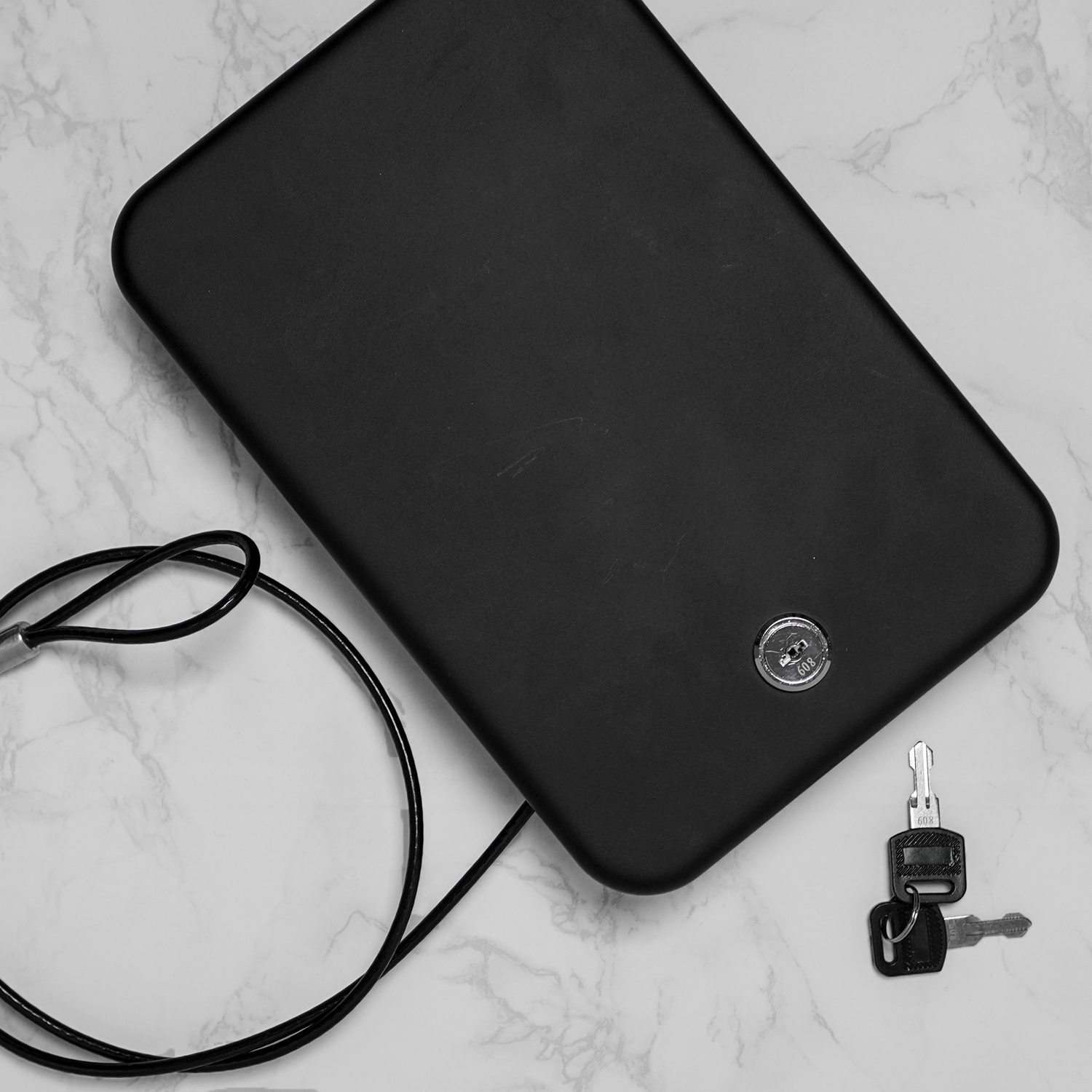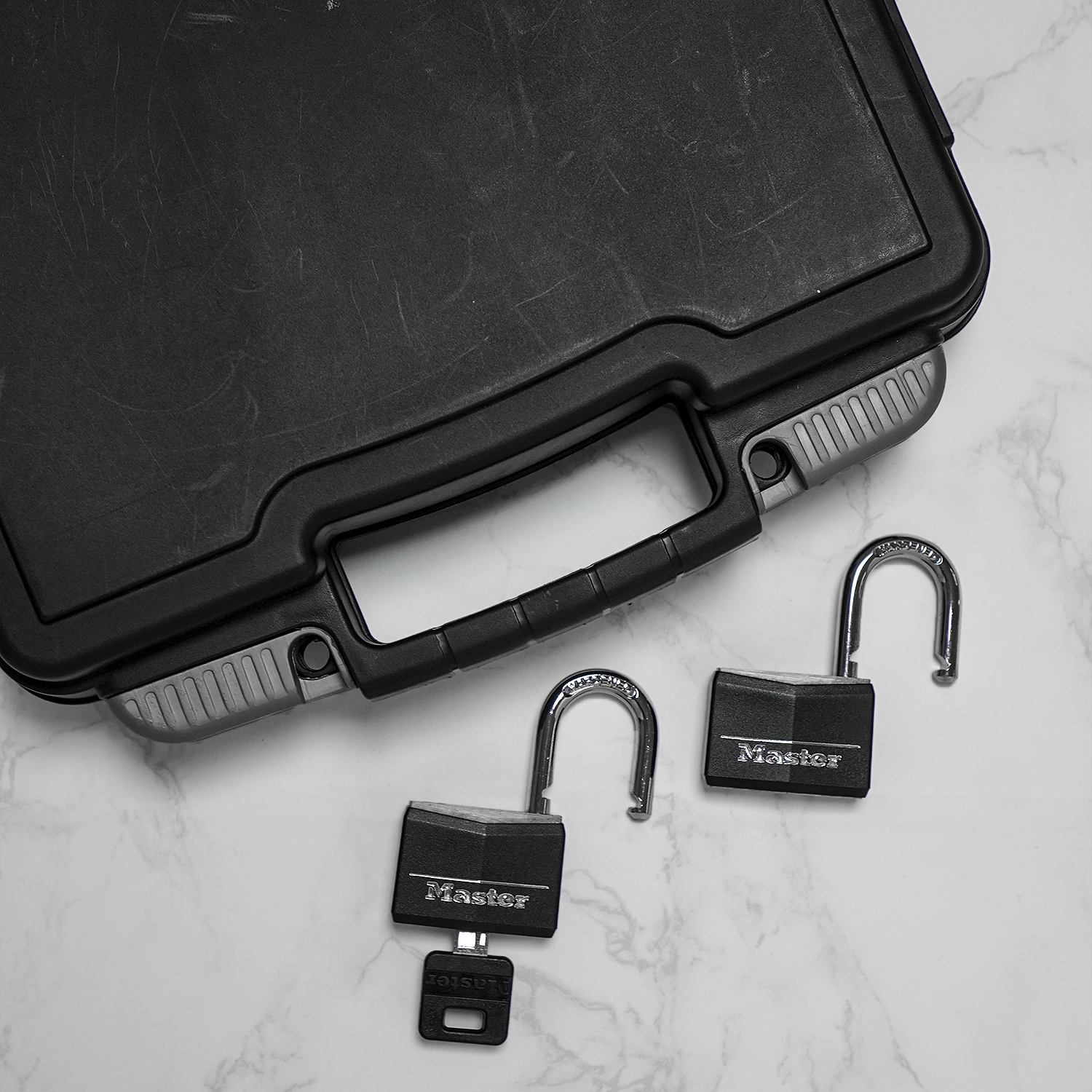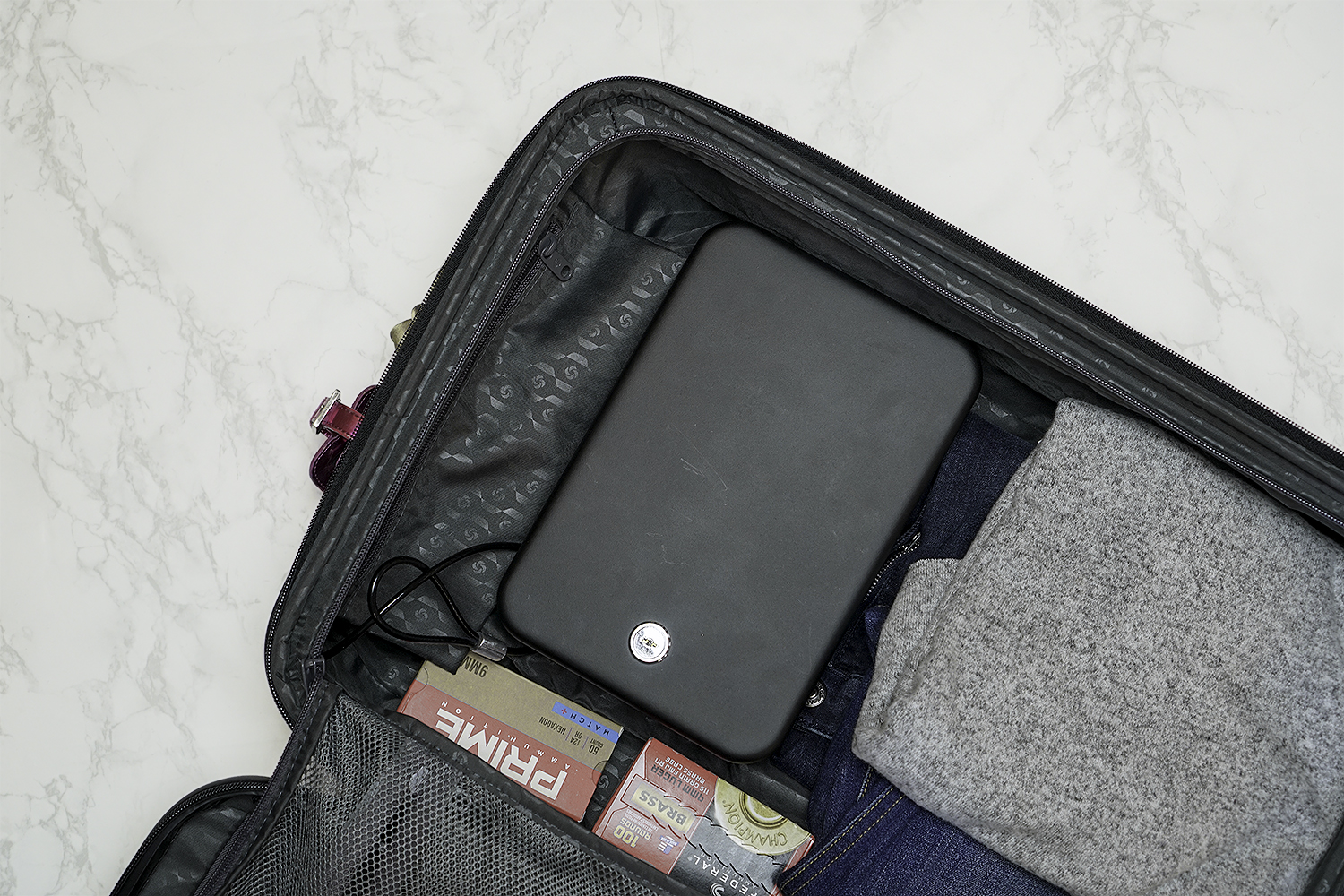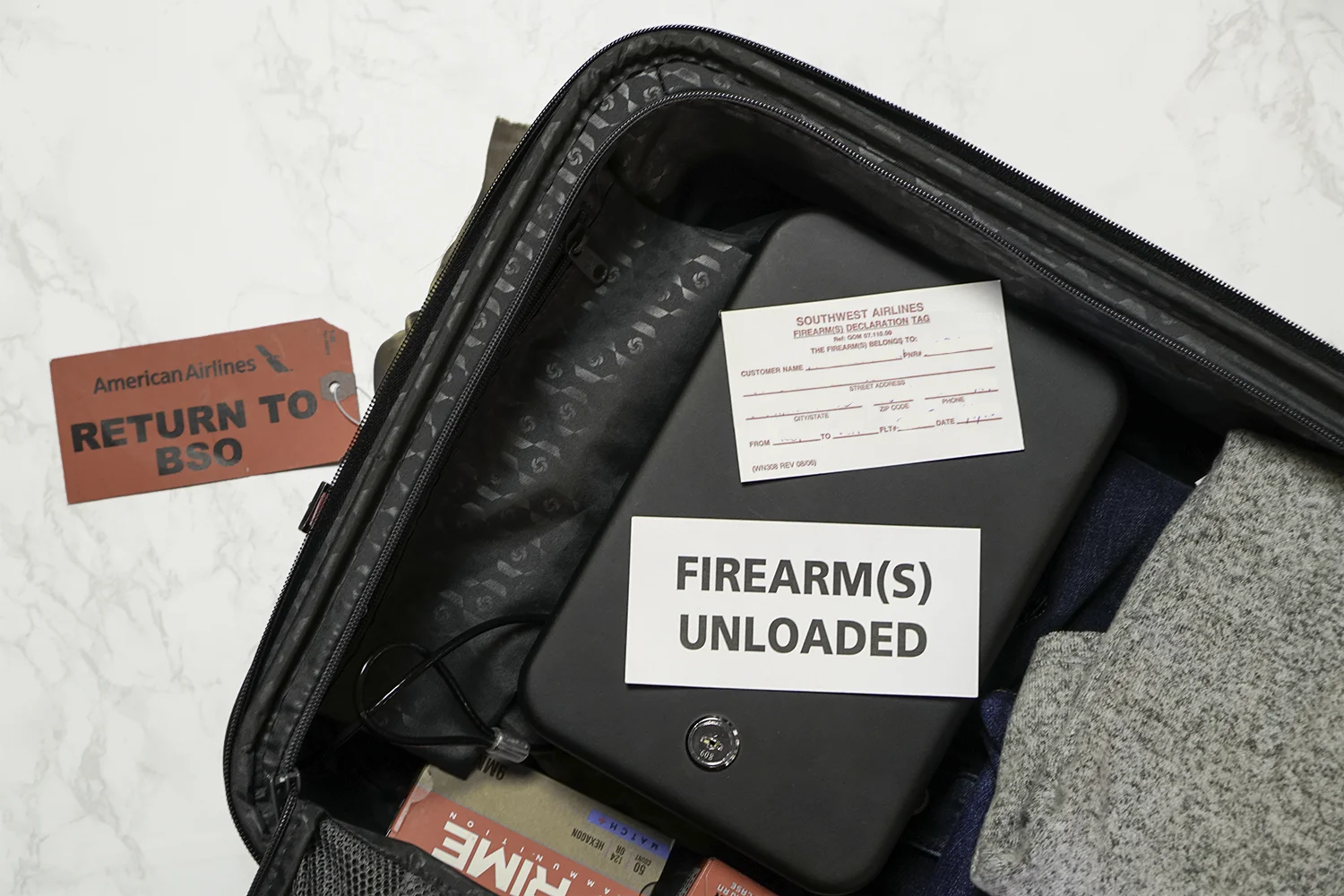Flying With Firearms
I remember the days when getting on an airplane was exciting and when the in-flight meal was something to look forward to. However, nowadays flying seems to bring on more inconvenience and hassle with all the rules and regulations that TSA and each airline has implemented. And don’t get me started on how airlines are charging for every single thing now. While the act of flying may not give you any warm and fuzzies, you can at least look forward to the destination, right?!
With all the restrictions being set forth and the overall hassle that flying has become the thought of having to fly with your firearm might seem daunting and complicated. At least that's how I felt the first time. I was so nervous the first I had to fly with mine. However, it's actually pretty simple so long as you follow the rules, do your research, and take the time to double check that you are doing it right. Every now and again you hear of TSA finding ammo, magazines, and firearms in someone’s carry-on bag. Some are because the travelers just didn't bother to check the procedures and others because their carry-on bag might also be a range bag or recently used to go shooting. If you are guilty of having one bag for everything, I highly encourage you to triple-check your carry-on before you pack it. I also highly suggest that you consider keeping a separate range bag. Combining these two bags seems harmless but not taking the precaution to keep these bags separate or triple-checking before packing could lead to potential criminal charges.
Before You Fly
The first thing you’ll want to do before flying with a firearm is to check the following:
TSA's website for the rules for Transporting Firearms and Ammunition
The airline's website that you will be flying with for their specific policies. I’ve found it easy to just google the rules for each airline (e.g.; “american airlines firearm policy”) as this will usually take you right to the page; sometimes it can be hard to find on the individual airline website because I’ve seen firearms rules under ‘sporting equipment.’
The firearms and concealed carry (if you plan to carry) laws in the states you are traveling to, from, and through. You can find reciprocity information at concealedcarry.com. Additionally, if you plan on flying international, you will need to know those specific countries rules.
While TSA sets the overarching policy, each airline has specific rules in regards to how to pack the ammo, how much ammo you can bring, how to pack gun accessories, how many firearms you are allowed to bring, and how any extra firearm cases might count against your checked bag allowance. Unfortunately, each airline sets their own rules for things like that so be sure to read through it thoroughly. Additionally, you are responsible for knowing the firearms laws for the states or countries you’re traveling to. If you plan to carry concealed (within the United States), have you checked that your permit is allowed? Just because you have a concealed carry permit, doesn’t mean you are automatically allowed to carry in any state. You can check concelaedcarry.com extensive reciprocity map to see where your permit is accepted. However, also double-check the state/city government website.
When thinking about where you are traveling, be sure to consider the state your airport resides in as well. For instance, I reside in DC and the "DC" airport is actually right over the border in Virginia. While your destination might be DC, Virginia and DC have different firearm laws.
Mandatory Rules
Flying with a firearm is rather simple so long as you are prepared with the proper tools and keep these two rules in mind:
All firearms must be unloaded and locked in a hard-sided container transported as checked baggage only.
You must declare your firearm to the airline gate agent upon checking-in.
Securing Your Firearm
In order to properly fly with your firearm you will need a proper case and lock.
Hard-Sided Case: Your firearm must be stored in a case that is locked and can't be easily accessible. There is no “TSA approved” case and the only details provided for selecting your case is that it must be hard-sided and completely secure your firearm from being accessed. Sometimes the hard-sided case that comes with your gun will suffice as some have holes that allow you to slip a padlock through it. Alternatively, a separate locking case works as well. I’ve used both, pictured above, but solely use the Vaultek LifePod since I got it. If you use the case that comes with your firearm, make sure that even with padlocks that you can’t open the case even a little bit. My suggestion is use a padlock in every hole on your case to avoid any possibility of prying it open.
Locks: You can use either a combination lock or a key lock for your firearm case. I prefer a key lock. Additionally, while TSA’s website says you can use TSA-approved locks, I would advise against it. You should be the only one with the key to open up the firearm case. TSA-approved locks can be opened by any TSA agent. According to TSA regulations, “only the passenger should retain the key or combination to the lock unless TSA personnel request the key to open the firearm container to ensure compliance with TSA regulations.” This is to prevent anyone from accessing your firearm without you present. Since TSA agents have a master key that will open TSA-approved locks, it means that they could access your firearm when you’re not present.
Securing Cable: I recall when I first traveled with a firearm, I read that the hard-sided case also need to be secured to your luggage so the actual case could not be removed. However, I can’t seem to find this rule anymore. It’s possible that it’s not a requirement but I still do it for an added layer of security. I loop the security cable through the frame of my suitcase to secure it. With my key-locking case, the security cable gets locked inside. When I use my “gun case” I loop it through the handle. I know many people who don’t use a security cable and travel just fine. Like I said, I recall at some point seeing it somewhere so I just keep doing it. The other benefit of having a securing cable, is that it can be used to lock your firearm down at your hotel. If you need to leave your firearm in your hotel, you can still store it safety in the hard-sided case and then use the securing cable attached to a heavy piece of furniture or something that can’t be removed from the hotel room.
Packing Your Firearm & Ammo
Since it’s a requirement that all firearms are unloaded, I always lock mine up with the slide racked back and an empty magazine out. The case is secured to the frame of my suitcase and locked. I keep the key with me at all times while traveling.
If you are traveling with handguns, you can pack the hard sided case inside one of your suitcases that you already plan to travel with. There is no need to get a separate hard-sided case to use as a stand-alone piece of luggage. If you have lots of gear though, that might be something to consider. Just keep in mind, if you plan to pack your guns, gear, and ammo in your suitcase this goes against your weight-limit of your bag. So in addition to you clothing and toiletries, adding your guns, gear, and ammo means that 50 lbs adds up quick.
Ammunition must always be transported in their factory box. This means you can’t bring your ziploc bags or ammo cases with loose ammo rounds in your checked bag. Also double-check the airlines rules on how much ammo you can bring as most have a limit of around 11 lbs of ammunition. There are also some airlines that have rules on magazines being empty or not. To side of the err of caution, I always travel with my magazines empty.
At the Airport
Once you’ve made sure that your firearms are packed accordingly to TSA and airline regulations, you must declare your firearm upon checking in. Sadly, this means you can’t check-in online or at any of the kiosks. You’ll need to see a ticketing agent and not just the one that takes the bags. You have to stand in line, like the good ‘ol days, to see an agent at the ticket counter. Based on my personal experience with flying with a firearm this is what has typically happened. However, I’m learning that as responsible gun owners we often know more than the gate agents about this process.
One very important factor when flying with a firearm is that you need to arrive early to allow yourself extra time to check-in. Since you won’t have the added convenience of being able to check-in online, you never know how long the line will be or what other issues may arise. I always give myself an extra hour, just in case. Also, something to note too is that you will be required to open your suitcase at the ticket counter so you might want to pack strategically so nothing scandalous falls out ;)
I’ve traveled with both American Airlines and Southwest Airlines with a firearm and my experience has been pretty consistent except where noted below.
Checking-In and Declaring Your Firearm
Wait in line to see a ticket agent. Let the ticket agent know your name and where you’re traveling to and that you need to declare a firearm.
The airline ticket agent starts processing your check-in and will provide you with a firearm declaration slip to complete.
Each airline has a different firearm declaration slip but essentially they include information from your flight number, destination, personal information, and finally your signature indicating that the firearm is unloaded and packed according to TSA regulations.
The agent will ask you if your firearm is unloaded.
Note: As firearm owners, we have a certain process to ensure a firearm is unloaded. Drop mag, rack slide, visually see the chamber is clear, and then physically check the chamber is clear. For the purpose of declaring your firearm, this has been handled two ways for me. A simple verbal, “yes” has been good enough. Whereas other times, I’ve had to unlock my gun case so they can “see” it’s unloaded. I pack my firearm with the slide racked back. They have never physically checked my gun, touched my gun, or asked to touch my gun to show it’s unloaded.
Once confirmation has been made that your firearm is unloaded. You will be required to put the firearm declaration slip into your checked bag.
Note: I've been instructed to put the slip in my suitcase, other agents have told me it needed to be inside my locked gun case, while others have taped it to the outside of my gun case.
Depending on your airline, the agent will attach a tag to your bags handle that indicates to the baggage handlers at your destination that your bag needs to be returned to the airlines baggage office. Your bag should not be on the baggage claim carousel (more about this above).
After you are checked-in, the gate agent (again depending on your airline) will either walk with you to the bag screening area or straight to the to the bag screening agents to inform them that your bag has a firearm in it. What I like about this is that they screen your bag right away. You have to wait until your bag is screened before you can head off to security. Usually the bag screeners will give you a thumbs up if you're all good.
Note: I've only had the bag screeners want to check my bag once when I traveled with extra ammo boxes. If this happens, make sure you are with your bag when they open it and you are the one that opens the gun case. Do not give your key to anyone.
Picking Up Your Bag at Your Destination
When you arrive at your destination, your bag should not be found on the baggage claim carousel especially if it was tagged by the checking agent to be taken to the office or desk. However, about 50% of the time my checked bag with my firearm has ended up on the carousel. Keep a watch on the carousel for your bag, just in case. If it doesn't show up on the carousel, then head to the airlines baggage office or desk and let them know you need to pick up a bag. You’ll need to show them your ID and your baggage claim ticket. You might need to tell them you declared a firearm as well so they know why your bag might be at the office/desk.
Returning Home
On your return flight home, you will need to follow all these rules. Every single time you fly with a firearm you must declare it at the ticket counter. This includes round-trip flights.
While I'm comfortable and have traveled many times with a firearm, please keep in mind that this guidance is based on my personal experience. I still always check TSA guidelines and my specific airline before traveling. You never know when the rules could change. So please do your due diligence and research prior to flying with your firearm.








